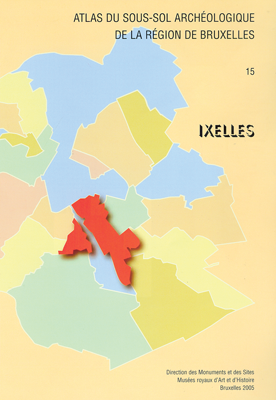
Cite this as: Degraeve, A. and Pinceel, J. 2018 To treat or not to treat? Insights into the Strategic Decision-Making in the Archaeological Conservation and Restoration Laboratory of the Brussels Capital Region, Belgium, Internet Archaeology 49. https://doi.org/10.11141/ia.49.10
During the lifetime of an archaeological project, we are confronted with an enormous diversity of questions and choices that have to be made. Will we excavate a site or not? Will we keep the excavated material or not? Will we treat the excavated material or not? And if we treat it, to what extent? This article will focus on the latter three questions.
Belgium is a federalised state, and each Region (Flanders, Wallonia and the Brussels Capital Region) has its own organization concerning archaeological heritage: individual inventories and protection of sites, excavations, storing of archaeological objects and samples, and archiving of the gathered data. In the Brussels Capital Region, preventive archaeological research has been systematically organised since 2004, the year when archaeology was included in the Brussels' law for town planning.

The workflow is as follows. Firstly, every request for a building permit or renovation/restoration permit is verified in relation to the known archaeological potential published in the Archaeological Atlas, a 24 volume thick paper series (Figure 1), integrated into the Regional Cartographic site BRUGis (Figure 2).
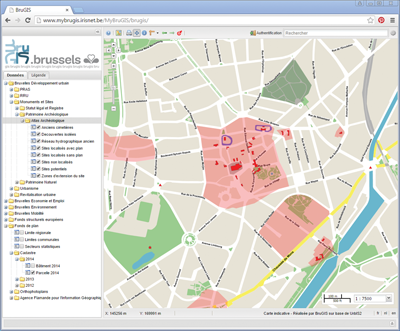
If the request matches known archaeological potential, the Department of Archaeological Heritage will include a compulsory clause into the permit obliging the developer to accept the organization of archaeological research, to mitigate against the expected destruction of the archaeology as described by the building/renovation works. The archaeological research (under and above ground) is then put out to tender to firms with the required license. The Region also pays for the time necessary to prepare the reports on and the study of the material. Therefore, on a regular basis and even during the excavation, samples and objects are taken from the site and brought to the Laboratory housed within the Administration. In this way, archaeologists will have the treated objects at their disposal as soon as they start the study and reporting phase.
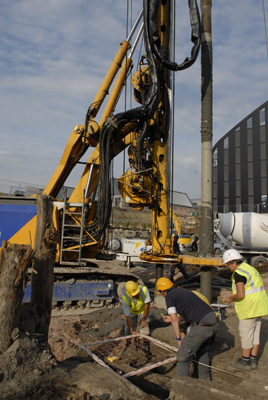
However, the volume of artefacts collected in the Brussels Capital Region has drastically increased following the systematic organization of the preventive archaeological research in its territory. Since the introduction of the law on archaeology in 2004, there has been an increase from around 3 to 6 archaeological excavations per year to between 40 and 50 excavations and building research projects per year (Figure 3; Figure 4): this for a territory of a mere 165km², albeit the capital of Belgium and administrative centre of the European Union, which will add to the construction pressure on the city.
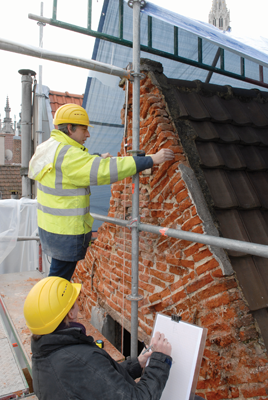
In 2002, the Laboratory of the Department of Archaeology was created with two members of staff. The technicians working on the excavations were quickly trained to be able to carry out basic laboratory operations whenever it was not possible to go on site. The team now consists of one metal and one ceramic restorer, and five technicians. The technicians still have to go on site whenever their help is needed, especially for short time projects carried out by the Department's own archaeologists and for which no tendering is organised with the licensed firms. Every person in the laboratory team has a range of skills and knowledge of the whole workflow from the moment the objects arrive until their final restoration and their safeguarding in the storage room.
Given the volume of artefacts that has arrived since 2010 (the date of the start of the systematic encoding of the storage and laboratory data), it has soon become clear that in order to make the best use of available resources, strategic decisions would have to be made. The huge amount of material (Figure 5) made it unrealistic to organise a complete detailed conservation and restoration treatment. And we had to ask also the question whether it was really necessary and useful? These questions were also nourished by the parallel and honest reflection of the non-archaeological hierarchy on the reasons to keep all 'this junk'.
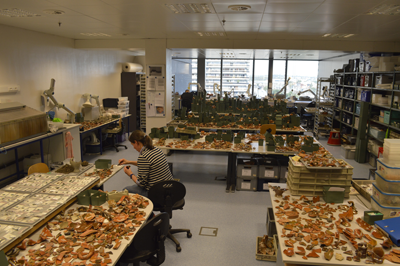
Making rational and well-founded choices is thus of the utmost importance. The main question is 'Why do we preserve and restore archaeological finds?' There are many possible answers, but one certainly is that conservation is a means of retrieval of archaeological information held by the objects to further our understanding of the past. We should preserve this archaeological information potential for the future, both the known and the not yet known. But how can we correctly assess this unknown research potential? How can we decide if artefacts or samples carry information potential?
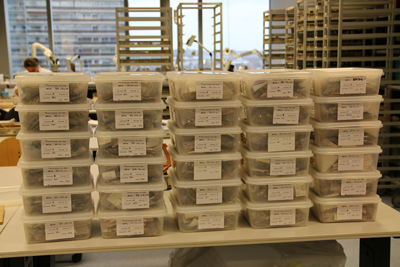
It is therefore important to try and minimise the input of resources during the assessment process, while attempting to maximise the informational output and to preserve the future informational potential of the artefacts. Protocols for treatment have been developed for the different types of materials encountered, clearly defining different possible levels, ranging from strictly passive or preventive conservation to highly complex active conservation or restoration treatments.
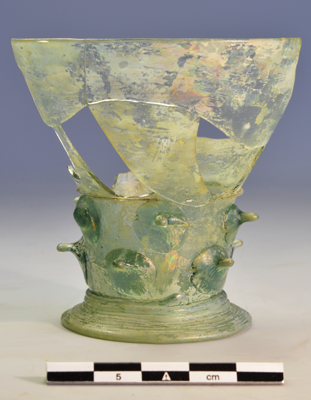
Passive or preventive conservation implies that the conservation surroundings are adapted to slow down the deterioration of the archaeological object as much as possible. No direct intervention is done on the object itself (Figure 6). Active conservation is a direct intervention on the object to slow down the deterioration as much as possible (Figure 7). Restoration is an intervention with the goal of finding back the original appearance of the object (Figure 8).
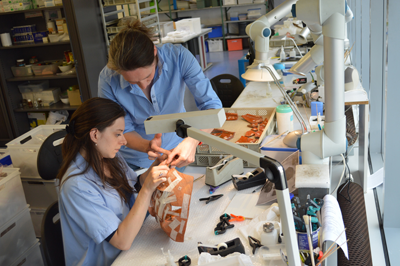
The choice for any one of these levels of treatment (each which consist of many different sublevels) should be determined by the informational potential of an object. Therefore the resources invested should always be in balance with the results that can predictably be obtained. While an irrationally extensive conservation and restoration treatment can often be avoided, it does require careful and professional assessment of all archaeological finds by a conservator, in order to recognise the informational potential of each object and to correctly apply the established protocol.
All archaeological finds and samples should undergo at least a preventive conservation adapted to the kind of material it consists of, safeguarding as much as possible its unknown information potential. When there are not enough means available for the preventive conservation of all finds, be it temporary or for a longer period of time, one can use the principle of 'predictive conservation'. This is when a selection is made of the most fragile and most threatened artefacts that carry the highest possible level of information and then undergoes preventive conservation while the rest of the artefacts wait to be organised. A full risk analysis is however needed to balance the pros and cons of this predictive conservation. In one example, while incoming material is usually put in a transit zone, for some archaeological sites the volume was such that another solution had to be found, and the most vulnerable artefacts were picked for preventive and active conservation in the laboratory, while the rest (some 3000 litres of samples originating from latrines and 800 litres of human bones) were stored in the 'stone' storage room (stone being the most resistant material against possible deterioration; Figure 9).

Our conservation and restoration laboratory has two major goals: making the information potential of the archaeological objects accessible, and conserving this information potential as long as possible. However, to reach these goals, the following basic principles should always be at the heart of the action.
The first principle is 'minimal intervention' i.e. only interventions necessary for the long term conservation and readability of the objects for further study and analysis are legitimate. When intervention is necessary, the second principle comes into force: namely that inert materials should be used both for the intervention on the finds as well as for their packing and storing. These materials must not generate or accelerate the chemical degradation or alteration of the objects. The chemical integrity of the objects should at all times be safeguarded. This also means that the chemical products used in the intervention should be resistant to aging and degradation over time. The third principle is reversibility. Every conservation and restoration act should as much as possible be reversible without damaging the find. To guarantee this reversibility, specific products must be used. The fourth principle is the authenticity of the archaeological object. Any restoration should always be clearly visible. Inherent traces of the past on the find should be safeguarded as much as possible. If parts have to be reconstructed, these should always be clearly distinguishable from the original object, not only by specialists but also by the wider public. The archaeological character of the object should always be at the centre of attention.
The first stage in passive conservation happens on the archaeological site itself as it is important to handle archaeological objects as carefully and quickly as possible in order to avoid them being damaged or lost. Passive conservation is defined as preventing the degradation of the object by conditioning the environment of the object. The finds should therefore be packed up right way, in some cases by simulating the environmental ambient conditions wherein the object was found (e.g. objects found in a wet environment should be kept wet in order to avoid rapid degradation). The creation of optimal preservation conditions at the very start is a necessary condition for any type of material. Therefore the field archaeologist receives guidelines from the Laboratory, together with the correct packing material. If necessary, the conservators will go on site to lift the objects.
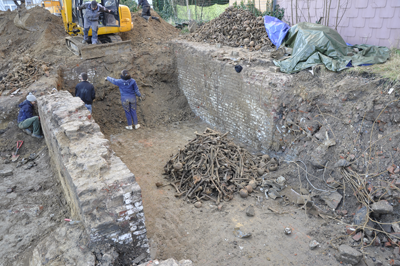
The second stage consists of full documentation and registration eventually followed by discarding or selective disposal. The case of the 19th century cemetery in the commune of Koekelberg is exemplary (Figure 10). According to official records the cemetery was closed in 1916 and relatives had been ordered to move the remains buried here to the new cemetery. An excavation was carried out in 2015 when the commune decided to build a day-nursery at the location. Along with some in situ tombs, the archaeological team discovered the foundations of one of the churches that stood here during the 19th century and, within its walls, an enormous amount of human bones probably discarded during the extension/development of the church in 1866.
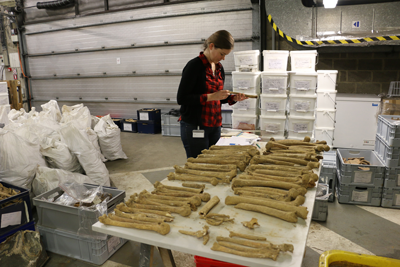
Assessments are still being carried out by our anthropologist to determine the scientific potential of this quantity of bone (Figure 11). Boxes are chosen at random to determine age, sex, metrical and non-metrical features, and to register and interpret the pathologies. Based on these results the corresponding report will deliver the necessary data and statistics to keep the collection and/or partly discard it (e.g. for educational purposes or for reburying).

In another example on the site of the rue d'Une Personne near the Grand-Place in the centre of Brussels, a huge layer of animal bones (mostly bovine jaw bones) was discovered - remnants of a neatfoots oil factory to be dated to the 14th-15th century (Figure 12). Under the supervision of the archaeozoologist, the layer was taken out completely and transported to the laboratory. Here random boxes were picked out for a first assessment: cleaning, sieving, sorting and identifying. While this work is still ongoing, the next step will be the difficult decision of what to keep, and what to discard, based on the statistical sampling and in function of its future research potential (because one cannot spend a lifetime cleaning 200 boxes of animal bones! Figure 13).

The next level of conservation/restoration consists of documentation and registration, but unlike previous stages, the artefacts will not be discarded and a preventive conservation has to be organised, for example, the large samples coming from building archaeology projects are registered but then quarantined awaiting further treatment before going into the storage room for wooden objects. This quarantine is necessary to evacuate the various fungi and wood-eating insects probably present in the samples and that would otherwise attack the whole wood collection (Figure 14). The many samples taken on site for palaeoenvironmental research are to be considered within the same category, awaiting a first assessment and/or complete analysis and conservation.
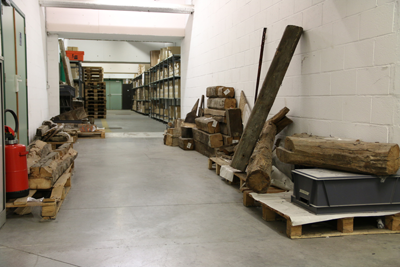
It is a similar process for the metal artefacts. Awaiting an assessment of their potential, and to avoid so-called post-excavation corrosion, it is important to separate them immediately from other finds and store them in a stable environment. Not having the means of creating a storage room with the necessary stable temperature and humidity, we make so-called local micro-climates by putting the objects in airtight and transparent boxes with silica-gel and a chart, to track humidity levels (Figure 15). This method is much less expensive and needs only one person checking the state of the boxes once a month and, if necessary, change the silica gel. We found that in this kind of local climate condition, and after an initial change of silica gel over approximately 6 months, the stabilised environment will persist for years, as long as the boxes are not opened on a regular basis.
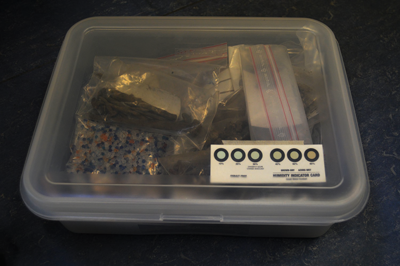
Organic material is particularly fragile. Wooden fragments recovered from excavations, and the wet surrounding deposits, are kept in water to avoid shrinking (Figure 16). The object loses cellulose when waterlogged and so the wood cells would collapse if they were dried in a non-controlled way. Once there are enough objects, they are shipped to a specialised laboratory for active conservation.
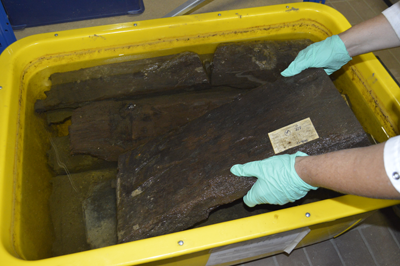
During the excavation of the site of rue d'Une Personne, a huge waste pit was found carrying some 800 litres of fragments of shoes dating to the 14th century — an extraordinary discovery for Brussels. The decision was immediately made to transport these shoe fragments in bulk form to the laboratory (Figure 17) and not to try to excavate them. Initial sorting was done according to the type of fragments (Figure 18), and these were then packed in water in airtight boxes and refrigerated to avoid any biological deterioration, as fungicides can hinder or even make later analyses impossible and thus diminish the information potential of the artefacts. Cooling these objects is of course only a temporary method: the degradation process is delayed but not completely stopped. The next phase would be an active conservation.
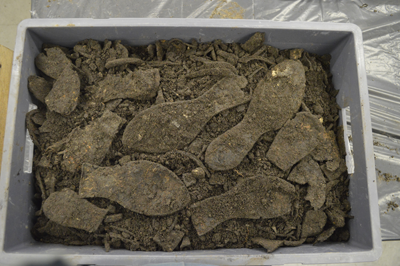
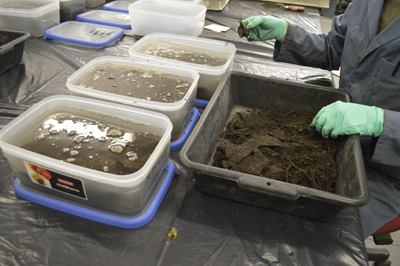
The first of the most intensive levels is the active conservation or remedial conservation, following the preventive conservation. This is where a direct intervention on the object is made. Glass is one example. Glass is found in smaller quantities on our sites and it is a material that is extremely sensitive to physical and chemical degradation, the latter expressed by lixiviation/leaching of certain elements and corrosion. Often the material is attacked layer by layer, modifying the colour and the transparency of the glass, resulting in a surface varying between iridescent and opaque (Figure 19). The active conservation procedures to be followed depends on the degree of conservation and the environment the object has been found in. Often the glass objects arrive in a wet environment at the Laboratory. Objects are kept in baths and the water is gradually changed with solvents, followed by a period of drying and then consolidated with an inert and reversible product. In this way, the glass object is kept in good shape for further research.
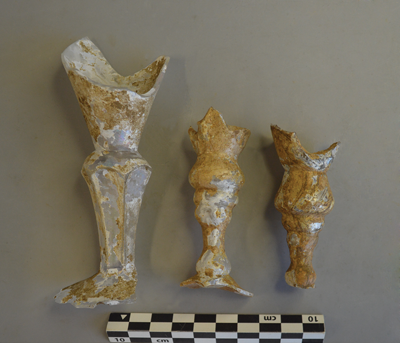
The last level involves active conservation and the restoration of the object. The level of treatment will be determined by the reason for which the objects are being restored. In our Laboratory, objects will only be restored if they are planned to be presented to the public in a museum or during an exhibit. The choices for treatment have to take this into account, with most attention paid to the educational value of the object, followed by its aesthetic value. The significance of the object has to be considered and how it is to be presented in order to achieve this. For example, an almost complete dish needs specific restoration methods to ensure its structural stability during manipulation by the archaeologists, during transport and exhibit (Figure 20). Therefore local fillings have been made with a specially-developed chemically-inert component. The colour is determined as one shade lighter than the original material to ensure the visibility of the modern restoration.
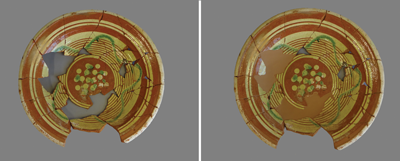
Metal objects are often found in a heavily corroded condition, with their original form mostly invisible. In order to have a view on the information potential of these 'lumps' (as they often present themselves) and to be able to choose the corresponding level of treatment, we choose to systematically X-ray these finds. The X-ray gives clear views on the information hidden in the corrosion and based on this information the restorer will decide if and how the object will be treated (Figure 21). When going through the different treatment levels of an iron key, for example, an X-ray is made of the corroded metal object, showing its potential in 2D. In order to obtain more information on the object, it is partially cleaned on strategically chosen locations e.g. to reveal the cross-section of the object for an archaeological drawing. For most objects, this level of treatment suffices and a complex and extremely time-consuming complete cleaning of the entire object is unnecessary. Only if the object is chosen for an exhibit, we will opt for complete cleaning (Figure 22).
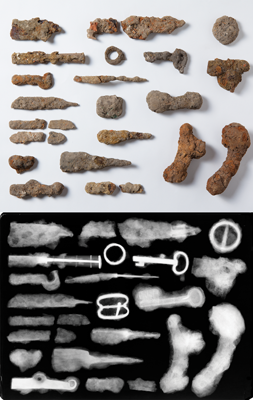
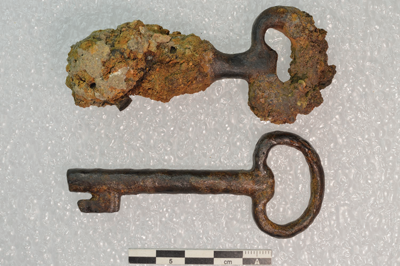
From the choice of the conservation, the choice of treatment, to the intensity of the treatment, everything has to be proportionate to the archaeological information potential hidden in the objects. In the absence of an ideal world with unlimited funds and personnel, the ultimate goal should be minimising the input of energy and means together with the maximising of the information output. New laboratory techniques used in medicine and chemistry have potential here and should be explored. Choices have to be made on a daily basis but a professional assessment of the information potential of the various materials that are found on an archaeological site is of the utmost importance in order to be able to take rational and strategic decisions.
Estimating potential and the ensuing decisions on what to keep and to treat cannot be done by the archaeologist in the field. The time pressure, the often limited resources and the specialists not necessarily being present in the field, do not enable archaeologists to take these important decisions: a lump is a lump until it arrives at the laboratory. We therefore recommend to gather a little bit too much than not enough because we can always discard later on in the process. During the excavation process, it is probably better to err on the side of caution. The assessment in the laboratory cannot be done without the archaeologist's excavation information, because they are the only ones with the insight into the context (which in its own right determines the archaeological information potential of the artefact). The circle is round…
Internet Archaeology is an open access journal based in the Department of Archaeology, University of York. Except where otherwise noted, content from this work may be used under the terms of the Creative Commons Attribution 3.0 (CC BY) Unported licence, which permits unrestricted use, distribution, and reproduction in any medium, provided that attribution to the author(s), the title of the work, the Internet Archaeology journal and the relevant URL/DOI are given.
Terms and Conditions | Legal Statements | Privacy Policy | Cookies Policy | Citing Internet Archaeology
Internet Archaeology content is preserved for the long term with the Archaeology Data Service. Help sustain and support open access publication by donating to our Open Access Archaeology Fund.